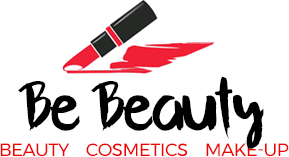
Here’s the introductory question: Do you read the lists of ingredients of beauty products?
I’m guessing that most of you skip this part, don’t you? But that’s actually a bad habit. Back then I didn’t pay attention to what the cosmetics I applied to my face skin contained and… I regretted this. Reality was fast to verify my approach to face skin care. Irritation, redness and acne started to make my life miserable and that was the moment when I decided to focus more on what I put on my face every day.
INCI: the source of knowledge about cosmetics
Everything that should be known about a beauty product is hidden in its composition. Usually, it can be found on the back of the packaging, on one side of a box, and in some cases on a leaflet. No matter the form, it’s worth finding it!
What can we learn from reading it? For example, information on the constituents of a product we’re holding in hands. In the accordance to the intentional law, the names of substances used in beauty products are now unified. And this is exactly what INCI stands for: International Nomenclature of Cosmetic Ingredients.
That’s important! The names of ingredients aren’t included into this list by accident but ranged accordingly to its amount that a particular product has. At the top of the list, there are substances that occupy the most of the products entire volume. The further it gets, the lower of the percentage concentration of a substance is.
Unwanted ingredients in beauty products
The most important for us though is to detect the unwanted ingredients that might potentially harm us. Sadly, there is quite a plenty of them – frequently, such substances outnumber the natural and safe ingredients. What should you focus on mainly while scanning beauty products’ lists?
- Formaldehyde (irritating gas, potentially cancerogenic),
- Parabens (preservatives, disturb hormonal balance),
- DEA (lathering agents, highly toxic),
- Phthalates (substances contributing to infertility),
- SLS/SLES (highly irritating and dehydrating detergents),
- Aluminium (dangerous constituent of deodorants),
- Paraffum (mineral oil, crude oil derivative),
- Propylene glycol (alcohol causing inflammation),
- Fragrances (frequently irritating and allergenic).
Naturally, this is just a handful of ingredients that can be found in many beauty products which sadly have exceptionally negative influence on our skin. I suggest you to get into this subject 🙂
How to check composition of a cosmetic?
The easiest way to do it is by taking into a hand a particular cosmetic, read and analyze its list of ingredients. I used to do this right at the beginning. However, it appeared to be fairly troublesome especially if you don’t know the unified names of ingredients and their action. Naturally, you can carry a list of substances that you want to stay away from. You can also check each ingredient on the internet while being in a drugstore. The good news is that sometimes you may come across a complete analysis of a particular beauty product which will surely save you some time; you don’t have to go into a few websites to get the full picture. Still, it’s quite time-consuming and as it’s obvious, we don’t always have time to stand in a store and read the composition going through an ingredient by ingredient.
Is there any simple solution to check a cosmetic composition? There are a few web pages where you can copy and paste the entire lists of ingredients to verify the content. Sadly, they seem to lack a few basic things.
In my view, the best way to analyse a cosmetic composition is to make use of an app created to serve this very purpose!
Apps to analyse cosmetic ingredients
Nowadays, I find mobile applications that are developed to scan the lists of ingredients exceptionally useful during my shopping. These simple apps were created to run through these complicated-looking lists and pick up the substances that might affect our skin negatively.
Advantages of apps for toxic ingredients
- saving time (scanning a barcode takes just a few seconds);
- greater consumer awareness (we start buying things more consciously);
- simplicity of use (you don’t have to type anything because you use the complete database);
- readability of symbols (potentially harmful substances are highlighted);
- availability (you can have the app always with you).
Obviously, you shouldn’t take it for granted that the app will always give you all the information you’re looking for. It happened to me a few times that the database lacked a few items of information. The good news is though that you can update the base by adding cosmetic products yourself.
Which app for scanning cosmetic ingredients is the best one?
Personally, I use Cosmetic Scan which is a very well-developed and easy to navigate cosmetic base. To make the best of this app, you have to register first. Once you do this, you can create your own virtual shelves to put there your favorite products on. You can also create a shelf with cosmetics that you want to avoid. I enjoy using Cosmetic Scan because it’s simple to use and I like the app’s layout. Give it a try 🙂
Naturally, this isn’t the only app owing to which you can analyse a cosmetic ingredients. You can also use Perfect Beauty (I guess, there is no iOS version) and CosmEthics (I haven’t tested it yet).
Did you know that such apps exist? Do you use any of them? Leave comments below 🙂

Leave a Comment